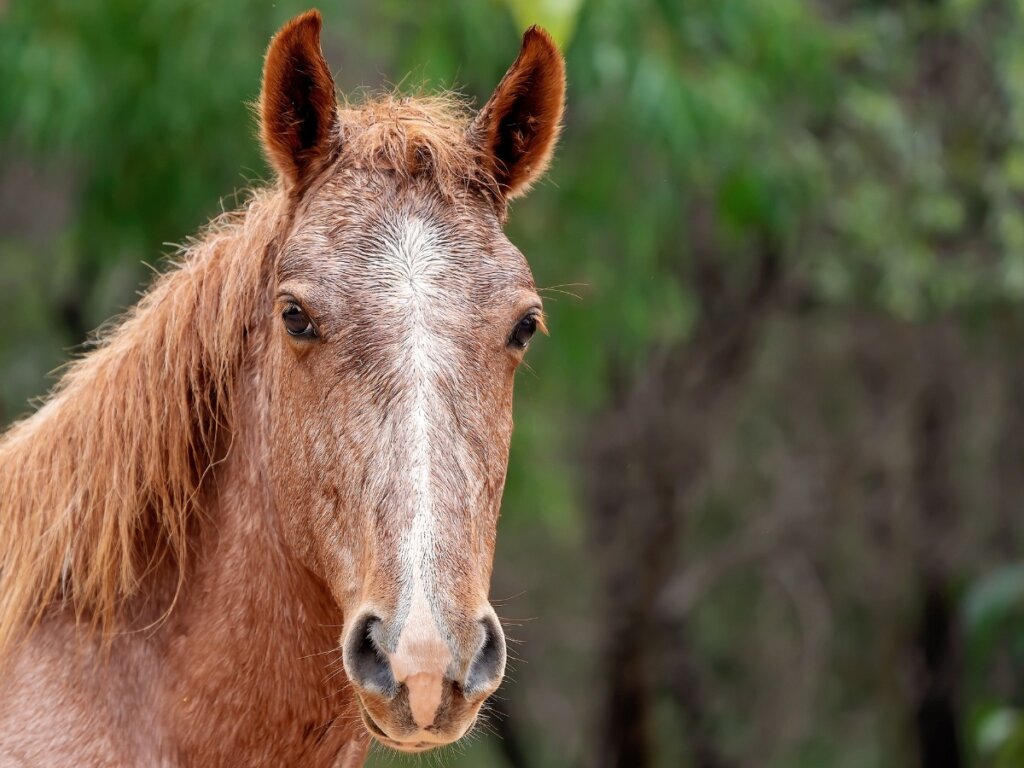Brumby Horse: Habitat and Characteristics

When you think of large herds of horses running wild, the first mental image travels directly to the prairies of the United States and the Mustang horses, but the truth is that Australia is ahead of North America in this respect with the brumby horse. This breed lives free in the prairies of the north and southeast of this country.
In this article, you can learn more about the origin of this breed (as there were no equines in Australia before its colonization) and the characteristics that have allowed it to adapt to life in freedom. Don’t miss it.
Origin of the species
The introduction of horses into Australia came from the hand of the first European settlers, in the 18th century, specifically in 1788. There they served as a mount and work animal until the later century, as, at the end of the gold rush, many horses were abandoned.
The name of this breed comes from the word baroomby, which means “wild” in the language of the indigenous people of the south of present-day Queensland.
The multitude of abandoned breeds in the Australian grasslands caused the brumby horse to gather a number of optimal characteristics for survival in the wild. Their number gradually increased over the years.
Later, during the Boer War and the First World War, these equids were tamed again to be incorporated into the cavalry of the armies, and were later abandoned again. Currently, some groups consider them a pest, so the Australian government authorized their hunting.

Brumby horse habitat
The brumby horse lives in the wild throughout Australia. The largest population lives in the region of the Australian Alps, in the southeast. Another important vital nucleus is located in the north, near Queensland. Likewise, it can also be seen in some national parks that have their own population of this very extensive breed.
Physical characteristics
The Brumby horse is 1.40 to 1.50 meters tall at the withers, so it isn’t a very large breed. This is due to the blood mixture shared with the British ponies, which also arrived with the colonization.
These equines have a short neck and their legs are thin and strong, with hard hooves. Its constitution is robust and compact, sometimes a little disproportionate to its size. As for the color of the cape, there are different shades of brown and white, but there’s a great variety.
Adaptation of the brumby horse
It’s a breed that has adapted to life in the wild and surviving in dry environments with few resources. It isn’t a particularly fast horse (its hindquarters aren’t very powerful) and its skin is delicate. It isn’t considered a good horse to ride.
When Australia began to be colonized, there were no major herbivores that could compete with the brumby horse. On the other hand, they didn’t have predators either, so they could feed and reproduce without problems.
At first, the vegetation was rich and abundant, but with the rapid proliferation of this horse came the scarcity of resources for other smaller species, putting them in danger. As a result of this problem, population control strategies were launched.
Brumby horse feeding
Like all horses, the brumby horse is herbivorous. It feeds mainly on the pastures that it frequents, and also helps itself to different herbs and hay, as well as any vegetables and scrub leaves it can find.
Reproduction of the brumby horse
It’s a viviparous mammal that reaches sexual maturity at 14-15 months for females and at 14-18 months for males. Reproduction comprises the stages of courtship, mating, gestation, and parturition.
The gestation of the brumby horse lasts 11-12 months and the mare usually has a single foal, but sometimes twins. The foal’s lactation lasts up to 6 months of age.
Population control
There are different strategies to control horse populations in Australia. The environmental impact that its proliferation has on an already severely affected ecosystem is something that pits the Australian population against each other.
Some government bodies relocate these equines to national parks, but others hunt to kill them. Certain groups are against the killings, others consider them vermin, and others want to spread them out to lessen their impact. Public opinion weighs heavily on the measures taken and changes, depending on the region.
The traditional method of relocating herds is to use the lasso to catch them and lead them to a new location.
The economic costs of population control are high and, at the moment, none of the measures spares the horses suffering. The treatment currently considered the most humane is fertility control through injections. Although it has been implemented in some places, it remains to be seen whether it’s effective in the long term.
Many animal rights organizations maintain that methods such as killings with gunshots from a helicopter border on barbarism. They believe that the ones who are responsible for controlling their population from an ethical point of view are the ones who abandoned the horses when they were no longer useful to them: humans. What do you think?
All cited sources were thoroughly reviewed by our team to ensure their quality, reliability, currency, and validity. The bibliography of this article was considered reliable and of academic or scientific accuracy.
- Dawson, M. J. (2005). The population ecology of feral horses in the Australian Alps Management Summary. Australian Alps Liaison Committee, Canberra.
- Scasta, J. D., Adams, M., Gibbs, R., & Fleury, B. (2020). Free-ranging horse management in Australia, New Zealand and the United States: socio-ecological dimensions of a protracted environmental conflict. The Rangeland Journal, 42(1), 27-43.